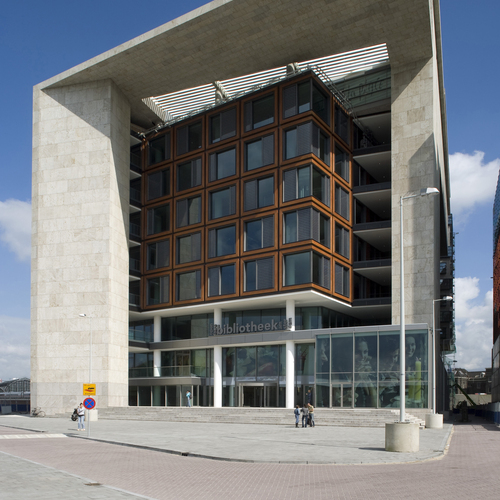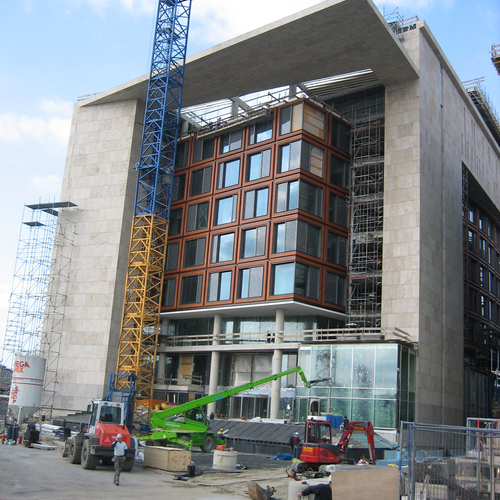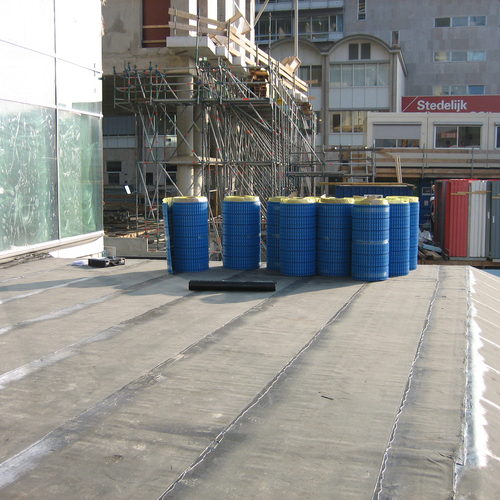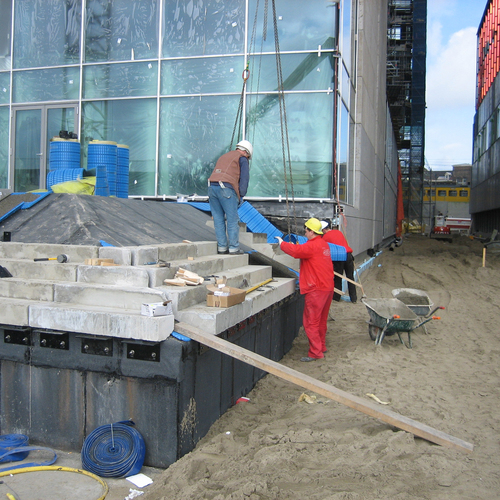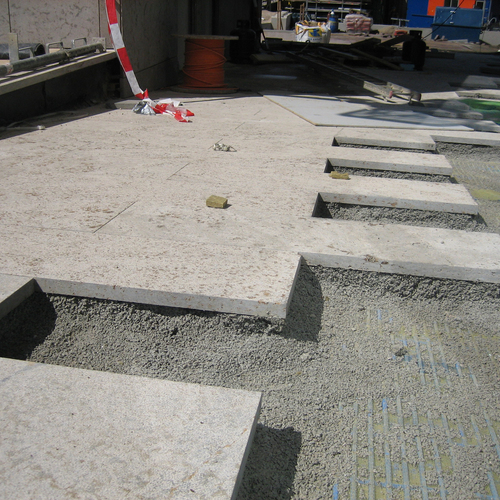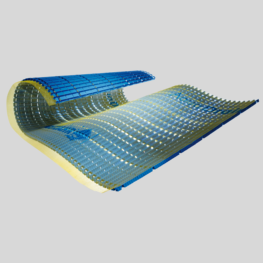Spectacular architecture, protected by surface drainage
More than 1.5 million books over an area of 28,000 square metres: the new centre of the “Openbare Bibliotheek Amsterdam” (OBA) is the largest public library in Europe – and one of Amsterdam's most spectacular buildings. The entrance area is intended to act as a public room, highlighted by the coquina that is processed there.
The construction of the Amsterdam library was the first new building in the closed area on Oosterdoks island. Architect Jo Coenen wanted to embed the library into its surroundings but make it independent at the same time – and provide the visitors with an optimum view of the surroundings. The actual usage area is therefore transparent. A construction made from coquina surrounds it like a frame. The enormous canopy creates a public room in the entrance area.
Linked to tradition with natural stone
The marvellous steps and the entrance plateau, the height of which has been increased to more than two metres, is covered with coquina. Jo Coenen deliberately selected this material: On the one hand, because it matches concrete and wood because of the grey/brown colour, and on the other hand because natural stone has a long tradition in public buildings in Europe. It also provides an elegant look because of the coquina and emphasizes the durability of the architecture. Because Jo Coenen thinks that the natural stone of the building becomes better with age. However, damage from water, ice and snow must be avoided.
And precisely here, the coquina was the critical element, because it is an extremely absorbent natural stone. For this reason, "classic" mortar laying would have been counter-productive – it stores the moisture for too long. And after a short time this would lead to unsightly moisture marks in the stone. The optimum structure of the outdoor coverings was therefore a tricky task for the team of architects.
Faster drainage
The water drainage capability improves by up to 150 times with the capillary passive drainage mat beneath the drainage mortar.
Capillary-passive surface drainage protects from damage
Jo Coenen and the construction company thought long and hard about how they could protect the coquina from damage. Because the drainage capacity of the drainage mortar alone is not sufficient, which had been shown by examinations by the Institut für textile Bau- und Umwelttechnik (tBU). Drainage mortar is also capillary active: backwater on the waterproofing, at the overlap joints of waterproofing membranes, for example, migrates back to the surface of the covering and causes efflorescence and moisture marks. It was therefore important to find an anti-capillary solution. They therefore turned to the specialists from Gutjahr.
The AquaDrain EK capillary-passive surface drainage from Gutjahr was therefore laid beneath the natural stone covering, about 500 square metres in total. The system was specially developed for use beneath fixed laid natural stone on drainage mortar. The water penetrating through the joints is led to the outside so quickly that damage is avoided – permanently.
Completely supported
AquaDrain EK supports the entire covering. The drainage channels form a cavity and water can drain away more quickly and effectively. At the same time, the covering dries faster because of the back ventilation. Another special feature of the innovative system is the mesh. This remains permanently water-permeable, which means that it does not clog because of the soluble lime in the drainage mortar. Gutjahr gives specialist companies a six-year guarantee on the system.
Blends into the environment
A total of four installers worked in the entrance area for six weeks. And everyone involved thinks that the result is impressive: it blends into the environment and is not just made from glass and steel like many other new buildings. And the entrance area was heavily frequented right from the start.
Products used
Similar project reports
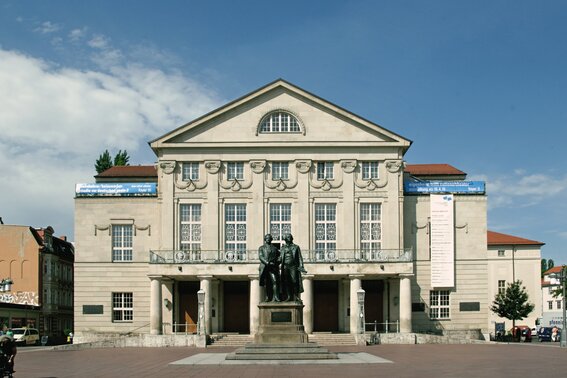
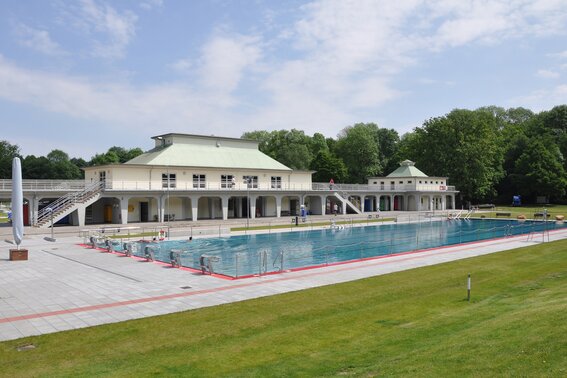
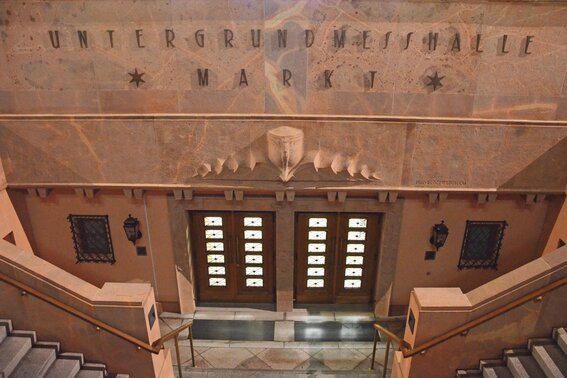
![[TRL] Gutjahr Systemtechnik GmbH - Komplettsysteme für den Außen- und Innenbereich](/build/images/gutjahr-logo.d62773db.svg)

